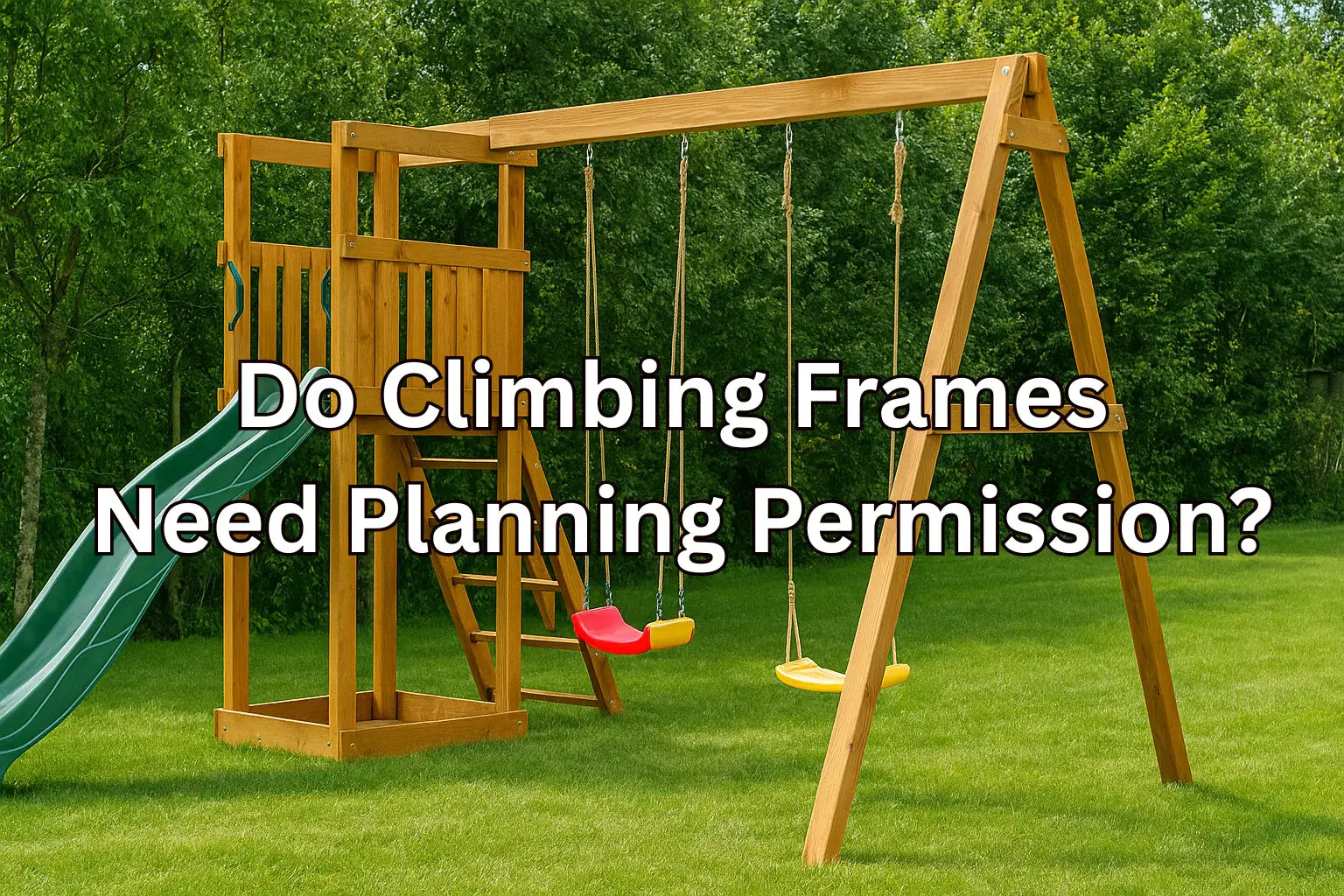
Do Climbing Frames Need Planning Permission
Thinking of adding a garden climbing frame but worried the council might knock?
Good news: you usually don’t need planning permission — phew!
But hold on. There are exceptions (hello, nosy neighbours and conservation zones).
Keep reading to dodge red tape, avoid drama, and build a play haven without breaking any rules.
Understanding Planning Permission for Garden Climbing Frames
General Rules and Permitted Development Rights
If you're dreaming of a climbing frame in the back garden, you're not alone. Loads of families are doing the same — especially since outdoor play has become a must-have, not a luxury.
Luckily, most garden climbing frames fall under something called permitted development. That means you don’t usually need to ask the council for permission.
But there’s a catch (isn’t there always?). Your climbing frame has to tick a few boxes first — mainly around height, location, and how it's built.
"Outbuilding" Classification for Play Equipment
In planning speak, climbing frames are often lumped in with “outbuildings.” Think of sheds, greenhouses, and summerhouses.
As long as the frame is for personal use and not towering over your garden like a theme park ride, it’ll likely be classed this way. That means fewer hoops to jump through.
But — and it’s a big one — the rules still apply. Just because it’s for fun doesn’t mean you can pop it anywhere.
Common Exemptions (Height, Garden Coverage, Location)
Here’s where things get more specific.
If your climbing frame is:
-
No taller than 3 metres (or 4 metres if it has a dual-pitched roof),
-
Stays in the back garden,
-
And doesn’t eat up too much garden space...
...then you’re probably in the clear.
But pop it next to a boundary or facing the road, and suddenly the rules change. Councils don’t love play towers overlooking driveways or dominating the view from the street.
The Concept of "Temporary Structures"
Let’s say you’ve got one of those frames that folds up or isn’t bolted to the ground. That might count as a temporary structure.
It’s a bit of a grey area, but generally speaking, if it can be picked up and moved, it’s seen as less of a permanent change to your property.

When Planning Permission May Be Required
Specific Height and Boundary Restrictions
Height is a biggie. Go over the 3–4 metre limit and you’re stepping into planning permission territory.
Same goes for frames built too close to the fence, especially if your neighbours feel like they’re being watched every time they go outside.
So, if your frame is right on the boundary and gives kids a bird’s eye view of next door’s hot tub? That’s likely to raise a few eyebrows — and possibly a complaint.
Impact on Neighbours (Overlooking, Privacy)
Imagine sitting in your garden with a cuppa and suddenly a five-year-old is staring down at you from a lookout tower. Not ideal.
That’s why councils consider overlooking and loss of privacy. If your climbing frame gives an unfair view into someone’s garden or home, it could be a problem.
You might be within your rights — but a neighbour’s complaint can still trigger a visit from the planning team.
Designated Land Areas (Conservation Areas, Listed Buildings)
Live in a conservation area? Own a listed property? The rules get a lot stricter.
Even a small climbing frame can be flagged if it doesn’t blend in with the character of the area. Councils in these zones care deeply about aesthetics.
Materials, colours, even shape — it can all matter.
Always check before you build.
Front Garden Installations
Here’s a fast rule: no climbing frames in the front garden without permission.
It’s just too visible, and councils usually say no to structures that change the look of the street. Even if the kids love it, the neighbours might not.
Best to keep the fun in the back.

What Happens If You Don't Seek Permission
Local Authority Enforcement and Discretion
Let’s say you install a frame that breaks the rules. What then?
You might get an enforcement notice. That’s a formal nudge (or shove) from the council saying you need to change or remove it.
But councils also use discretion. If there are no complaints and the frame isn’t causing issues, they may let it slide.
Still — do you want to take that risk?
Importance of Good Neighbour Relations
Here’s the truth: most climbing frame dramas don’t start with the council — they start with neighbours.
A polite heads-up can go a long way. Especially if your new play tower might loom over their BBQ space.
Avoid arguments. Start with a conversation.
Consequences of Non-Compliance
Worst-case scenario? The council makes you take it down.
That means wasted money, disappointed kids, and a whole lot of hassle. And if you don’t comply, it can even lead to fines.
It’s just not worth the gamble.
How to Determine If Your Climbing Frame Needs Approval
Every property’s different. So how do you know if your garden climbing frame needs approval?
Look at three things:
size, position, and how permanent it is.
Dimensions (Height and Footprint)
Check the height first.
Under 3 metres? You’re probably fine.
Over 4? Get advice.
Also consider how much space it takes up. A mini toddler slide? Likely fine. A wooden fortress with turrets? Not so much.
Proximity to Boundaries
If your frame is right up against the fence, especially a tall one, you could have a problem.
Leave a bit of breathing room where you can. Councils like space between structures and boundaries — and so do neighbours.
Permanence vs. Portability
Is it bolted down with concrete footings? It’s permanent.
Moveable and freestanding? That might count in your favour.
The more “fixed” the structure, the more likely it’s subject to planning rules.

Steps to Check Local Regulations
Consulting Your Local Planning Authority (LPA)
Every council’s slightly different. That’s why your best bet is to contact your Local Planning Authority (LPA) directly.
They can tell you exactly what applies to your area.
And it’s always better to ask first than to undo later.
Utilising Online Planning Portals
Most local councils have an online planning portal. Some even have live chat or FAQs.
It’s a great place to start — especially if you’re just gathering info or need quick guidance.
You might even find your neighbour’s planning applications while you’re at it.
Documenting Your Research
Keep a folder — screenshots, emails, advice you’ve received. If there’s ever a disagreement, this becomes your safety net.
It shows you did your homework and acted in good faith.
Have you checked out our other posts?
Can I Put A Climbing Frame In My Garden?
How High Can A Climbing Frame Be?
Can I Put A Climbing Frame On Artificial Grass?
Can You Put A Climbing Frame On A Slope?
Can You Put A Climbing Frame On Concrete?
What Is Best To Put Under A Climbing Frame?



Leave a comment